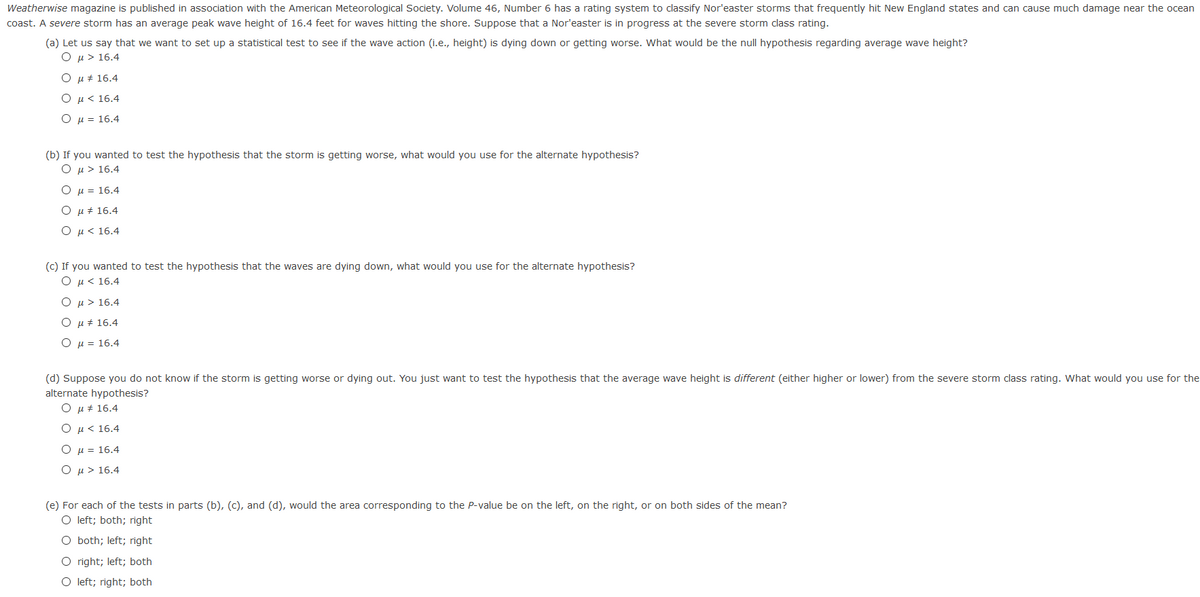Weatherwise magazine is published in association with the American Meteorological Society. Volume 46, Number 6 has a rating system to classify Nor'easter storms that frequently hit New England states and can cause much damage near the ocean coast. A severe storm has an average peak wave height of 16.4 feet for waves hitting the shore. Suppose that a Nor'easter is in progress at the severe storm class rating. (a) Let us say that we want to set up a statistical test to see if the wave action (i.e., height) is dying down or getting worse. What would be the null hypothesis regarding average wave height? Ο μ> 16.4 O u+ 16.4 Ou< 16.4 O= 16.4 (b) If you wanted to test the hypothesis that the storm is getting worse, what would you use for the alternate hypothesis? O u> 16.4 OH= 16.4 Ομt 16.4 O H< 16.4 (c) If you wanted to test the hypothesis that the waves are dying down, what would you use for the alternate hypothesis? O u< 16.4 Ο μ>16.4 O u+ 16.4 O H= 16.4
Unitary Method
The word “unitary” comes from the word “unit”, which means a single and complete entity. In this method, we find the value of a unit product from the given number of products, and then we solve for the other number of products.
Speed, Time, and Distance
Imagine you and 3 of your friends are planning to go to the playground at 6 in the evening. Your house is one mile away from the playground and one of your friends named Jim must start at 5 pm to reach the playground by walk. The other two friends are 3 miles away.
Profit and Loss
The amount earned or lost on the sale of one or more items is referred to as the profit or loss on that item.
Units and Measurements
Measurements and comparisons are the foundation of science and engineering. We, therefore, need rules that tell us how things are measured and compared. For these measurements and comparisons, we perform certain experiments, and we will need the experiments to set up the devices.
Weatherwise magazine is published in association with the American Meteorological Society. Volume 46, Number 6 has a rating system to classify Nor'easter storms that frequently hit New England states and can cause much damage near the ocean coast. A severe storm has an average peak wave height of 16.4 feet for waves hitting the shore. Suppose that a Nor'easter is in progress at the severe storm class rating.
I need help with (a) (b) and(c)

Trending now
This is a popular solution!
Step by step
Solved in 3 steps with 4 images


